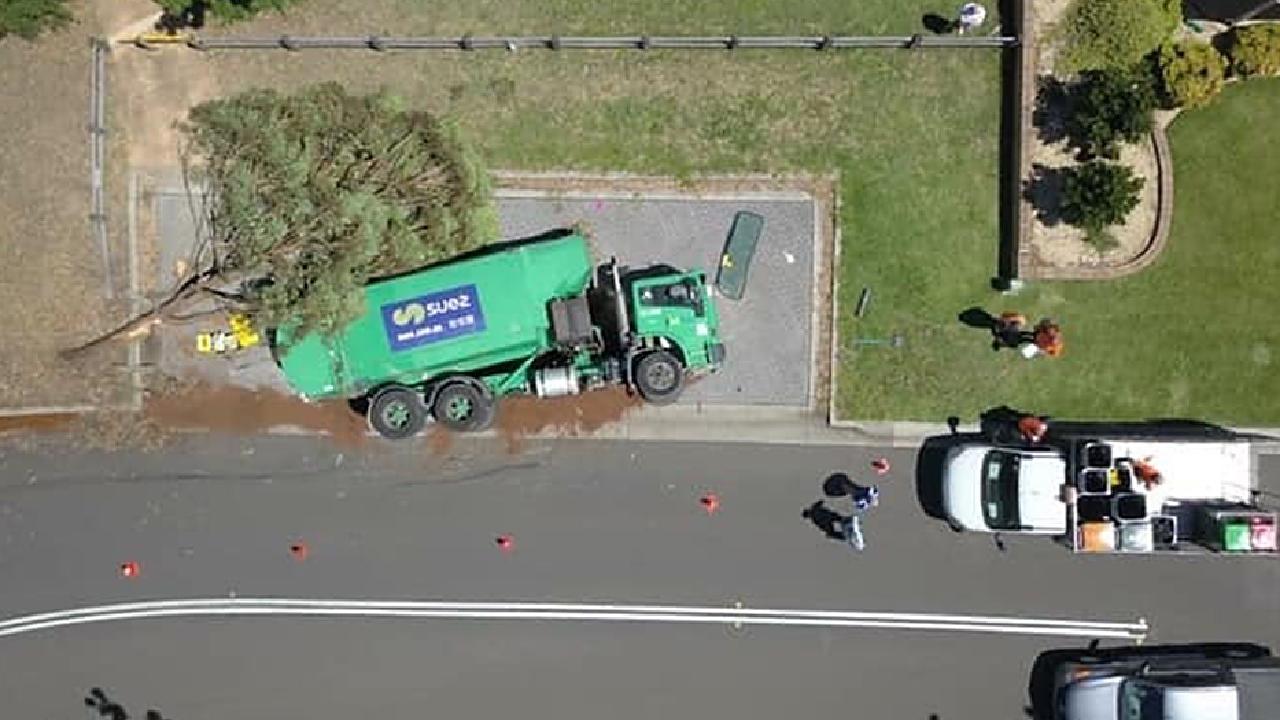

Just the other day, I was on my way back home when I came across something that really bothered me. A homeowner along the road must have been doing some spring cleaning or massive purging, but all that matters is that they had a massive pile of trash out on collection day. While it was neatly organized in a line along the road, there must have been trash lined up for about 20-25 yards. We are not talking bags of leaves, no, there were carpets, furniture, trash bags, and a bunch of other stuff. Look, he may have scheduled a bulk pick up, but based on the fact that quite a bit of it was in trash cans, I am not thinking that was the case.
Did I mention I live in Florida? Well, this is important. For anyone that has been in Florida as it starts to warm up, they will know that thunderstorms pop up often, and when they do, they can dump lots of rain very quickly. Well, this trash drive-by occurred on one of those days, by the time I made it to my driveway, about 10 minutes later, it was raining sideways. As a previous fleet manager that worked closely with our solid waste leadership team, I know the impact wet trash has on weight. Do you? I’ll be happy to explain.
One gallon of water weighs 8.345 lbs, that’s just a fact.1 What’s a little harder to pin down is how much garbage will weigh after it soaks up some rain….I’ll make some assumptions. Let’s assume that the trash in front of that person’s home weighed 1,000 lbs dry. After that massive downpour, let’s say the trash absorbed and collected water in the garbage cans. For that 1,000 lbs of dry trash and water collected in the trash cans to now weigh an additional 250 lbs, just shyof 30 gallons of water would have needed to hitch a ride on to the garbage truck. Did it happen, I don’t know. Is it possible based on the amount of trash and rain that feel out of the sky, probably.
As that truck went along the rest of it’s route that day, there is a good chance that it collected more wet trash and exceeded its weight capacity causing all types of issues. Accelerated wear on the pavement, excessive load on the tires and other truck components, and an increased potential of an accident. You’re probably reading this post and thinking about the impact of excessive load on tires, so let’s talk more tires.
Underinflation and/or over loading of a tire causes excessive heat build-up and internal structural damage. This may cause a tire failure, including tread/belt separation, even at a later date, which can lead to an accident and serious personal injury or death.2 You see, a tire failure directly related to a tire overloading event is possible, but not likely. Much like a boxer, you get punched multiple times over the course of a fight, but it’s that one punch that lands in just the right spot that sends you to the mat.Tires are the same way, the event that severely damages and causes a tire to fail may not be nearly as harsh as all the other events that happened before.

What is a particular concern is the combination of low tire pressure and heavy loads. Worst case scenario for the tire, it fails. Worst case scenario for the organization tire fails, downtime, property damage, personal injury, or even worse. Keeping an eye on the combination of tire pressure, increasing load on the tire, and temperature of a tire would be ideal. What if a combination of all of those factors established a new threshold alerting the operation and the driver that it’s time to head to the transfer station or send out a new truck to finish the route?
The problem is, there are programs out there that track the weight of trucks in real-time, but they are expensive and difficult to calibrate. There are auto tire inflators but they respond to tire pressure only. What if there was a way to combine all of this with one solution focusing on one of the most expensive and hard to monitor components of your fleets – tires. There is. Tire problems happen out on the road, not in your shop. Have eyes on your tires in between shop visits. Be Proactive! Check out Revvo’s Tire Management Platform!
1 https://sciencenotes.org/much-gallon-water-weigh-easy-calculation/
2 http://us.coopertire.com/safety/tips/proper-loading#:~:text=Proper%20Loading,-Never%20exceed%20the&text=The%20maximum%20load%20for%20each,tire%20or%20the%20rim%2Fwheel.&text=Underinflation%20and%2For%20over%20loading,up%20and%20internal%20structural%20damage
Reducing friction isn’t just between tire and road, but between data collection and analysis. With rich analytics from AI such as Revvo’s TireIQ, fleet managers are finding ways to improve performance, safety, and uptime on the road. The result is lower costs for fleets of all types.
Looking to increase your performance, safety and uptime? With analysis from 375 billion data points, Revvo is ready to share useful insights for your fleet. See a demo today.
